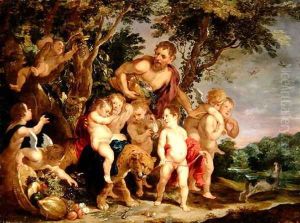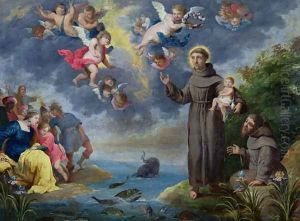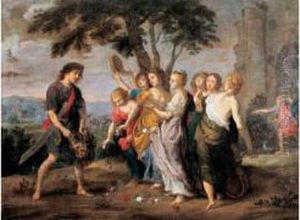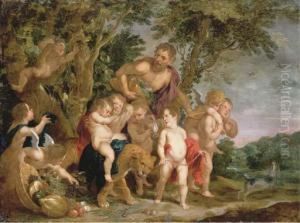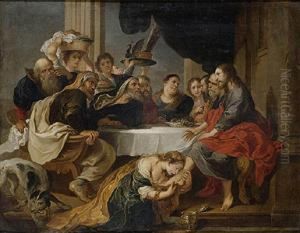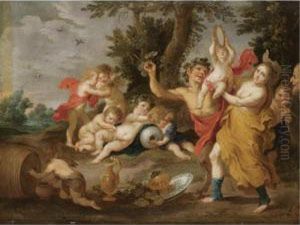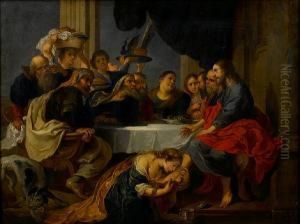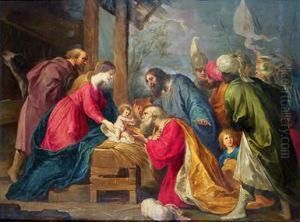Victor Wolfvoet Paintings
Victor Wolfvoet was a Flemish painter and art dealer who lived and worked during the 17th century. Born in 1612 in Antwerp, he was a part of the rich artistic environment of the city, which was a prominent center of art in Europe during that time. Wolfvoet is often associated with the Baroque movement, which was characterized by dramatic expression, deep color, and intense light and shadow.
Although not as widely recognized as some of his contemporaries, Wolfvoet was known for his history paintings and his works that depicted mythological and allegorical scenes. He was influenced by the works of Peter Paul Rubens, the leading Flemish painter of the time, and his style shows a clear indebtedness to Ruben's grandiose and dynamic compositions. In fact, Wolfvoet is sometimes noted for his copies of Rubens' works, which were highly regarded and contributed to the dissemination of Rubens’ style.
In addition to his painting career, Wolfvoet was active in the art market as an art dealer. This was not unusual for artists of the time, as dealing art provided them with financial stability and helped them to establish networks of patrons and fellow artists. His involvement in the art market would have given him a keen eye for the tastes and trends of the time, and likely influenced his own artistic output.
Victor Wolfvoet died relatively young, in 1652, and as such, his body of work is not as extensive as that of other artists who lived longer. Nonetheless, his contributions to the Flemish Baroque movement and his role in the Antwerp art scene make him a figure of interest to art historians. His works can be found in various European art collections, offering insights into the era's stylistic transitions and the influence of great masters like Rubens on lesser-known artists of the period.
